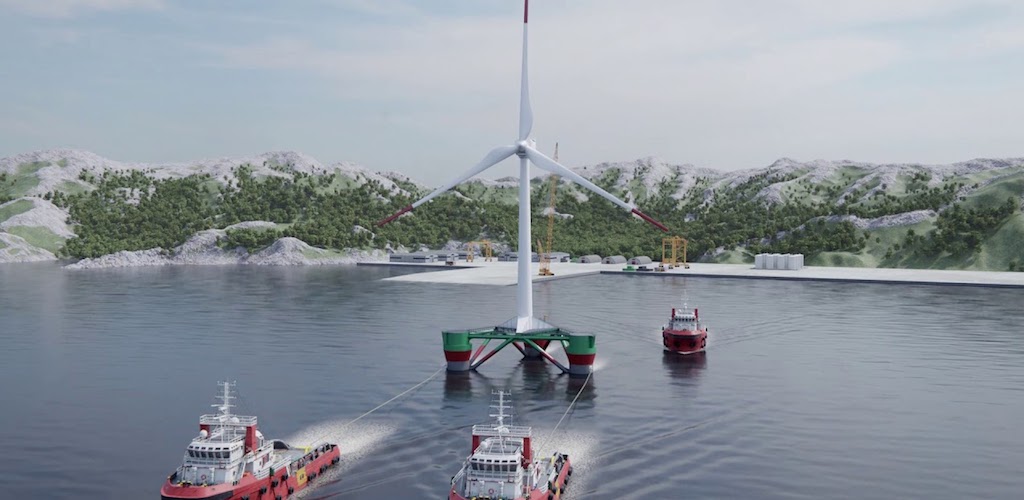Apr 06 | 2020
(Europe-Asia) Floating Wind Farm Development

French offshore developer Dolfines and Chinese shipbuilding company CIMC Raffles have signed a partnership agreement to boost offshore floating wind farm development.
The two firms signed a memorandum of understanding covering commercial development in Europe and Asia, and expect to work on a range of large-scale projects, each requiring significant breakbulk transport.
“The signing of this memorandum of understanding shows that the current health crisis does not interrupt the powerful dynamic projection of Dolfines on the future … We are very proud to work with CIMC Raffles, which has all the EPC skills and construction facilities required for mass production of floating wind turbines,” said Jean-Claude Bourdon, CEO of Dolfines.
TrussFloat System
The partners will focus on implementation of Dolfines’ Trussfloat system, which utilizes a semi-submersible platform to deliver a range of applications including grid electricity generation, electrification of offshore oil and gas platforms, direct water injection in mature oil and gas fields, and carbon storage (CCUS) and offshore hydrogen production.
"Dolfines has developed a light and passive semi-submersible platform for a wide range floating wind applications. With Dolfines, we want to support the oil and gas majors towards a carbon neutral future, ensuring profitable offshore production by giving a second life to O&G infrastructures,” said Fu Qiang, marketing director of CIMC Raffles.
Registered in Guyancourt, on the outskirts of Paris, Dolfines is asubsidairy of engineering goup Dietswell, which specializes in proprietary technologies and management systems for the energy sector.
Breakbulk Demand
Floating wind farm developments are forecast to become a major new driver for breakbulk demand, with typical installations requiring enormous lifting of as much as 20,000 tonnes and quay capacities including kilometers of wharf length and up to 18 meters of deep water berth.
Estimates from industry association WindEurope suggest that floating wind farms are expected to become much more competitive, as costs are projected to fall to €40 per megawatt-hour by 2030, vastly undercutting alternatives and creating a strong business case for investment.
“With the right visibility in terms of volumes and industrialization, floating costs could tumble even faster than for bottom-fixed offshore wind, down from today’s €180-200 per megawatt-hour to reach €40-60/MWh by 2030,” a spokesperson for WindEurope said.



